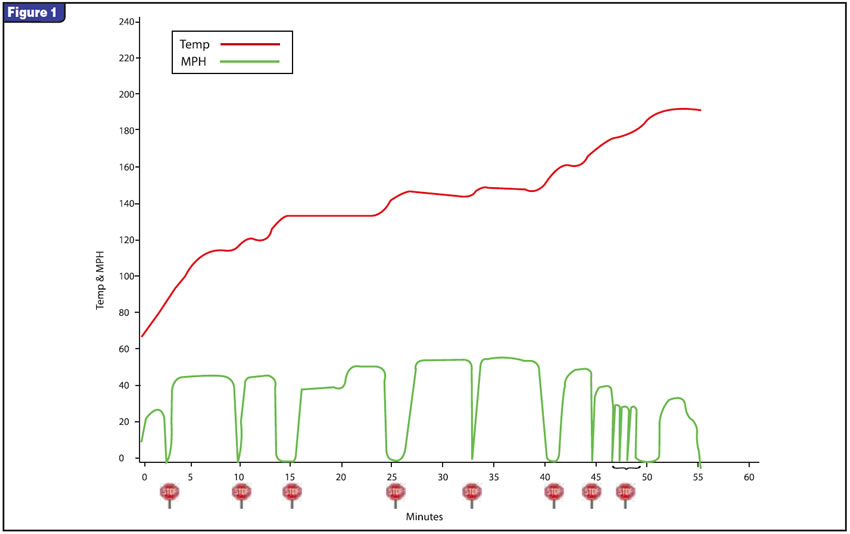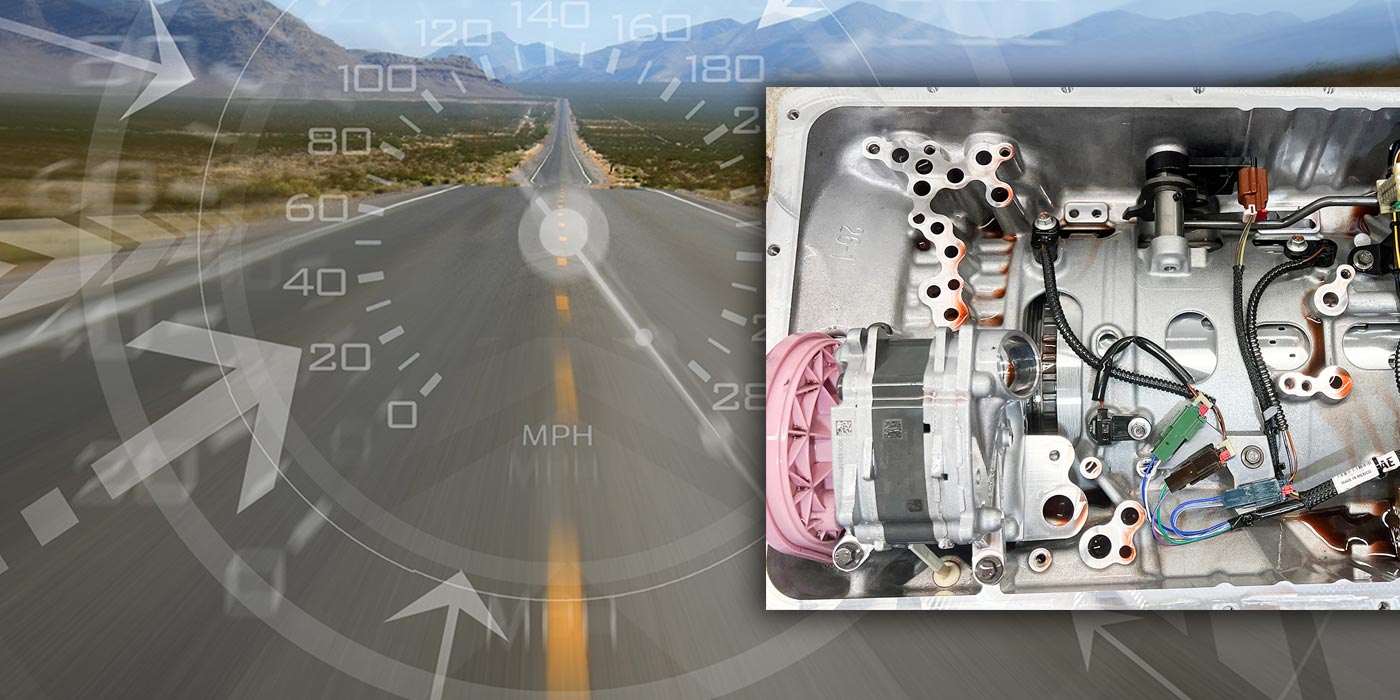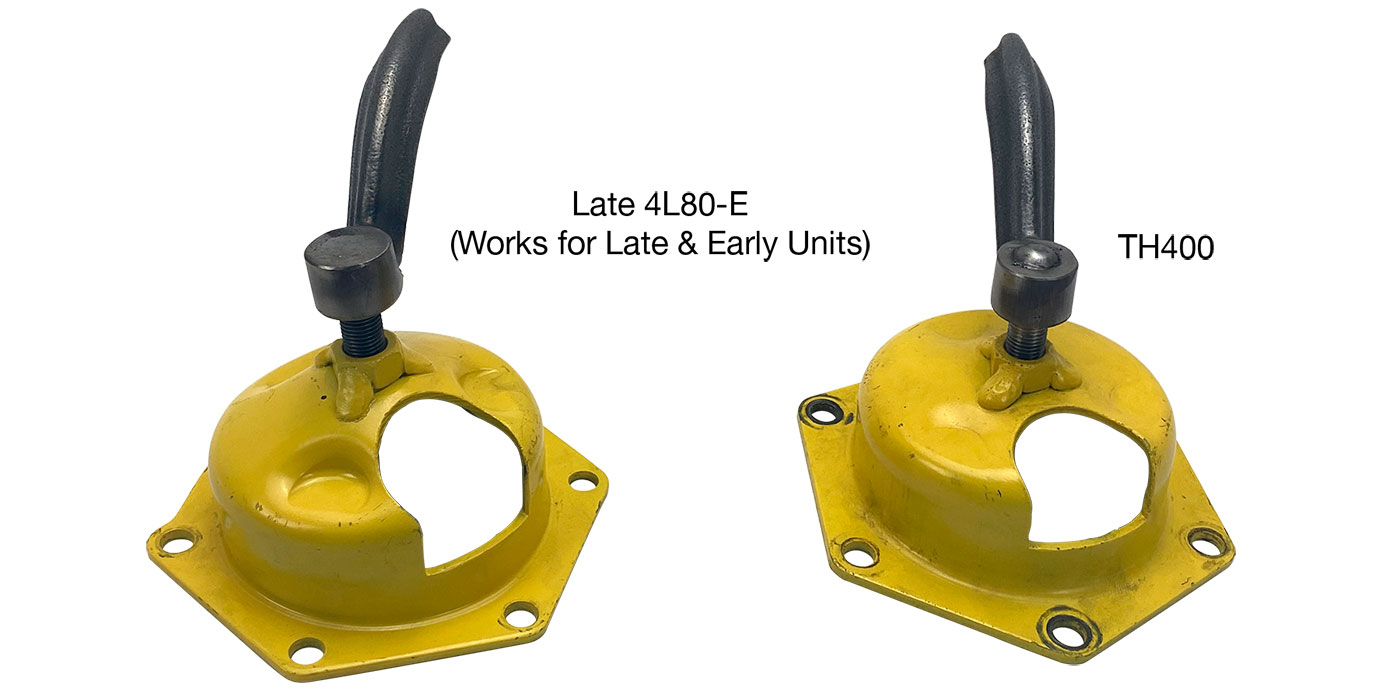
TASC Force Tips
- Author: John Pifke
How long have you been in the transmission business? Have you ever honestly sat down and thought about how an automatic transmission heats up? I mean, how hot does it get and how fast does it get there? Does the temperature stabilize as it does in an engine, or is it always changing? Have you ever taken a car for a nice long drive to be sure you “got it hot” and not been able to reproduce the problem? I’m sure you always figured that stop-and-go city driving creates more heat than driving on the highway, but how much more?
I have been in the transmission business for more than 30 years now, I’ve written articles for the trade magazines and I have lived and worked in hot and cold climates. I’m not the sharpest tool in the shed but I’m not the dullest either. The funny thing is that I have apparently always sort of assumed that I knew about temperature. I recently had the opportunity to drive a vehicle (my own) extensively with a digital temperature gauge attached. I found that I wasn’t entirely wrong about my long-held assumptions, but I wasn’t entirely right, either.

In case you’ve ever wondered, here’s what I found. (Warning: Your results may vary, but then again, that’s kind of my point!)
The transmission starts out about the same temperature as the outside air after sitting all night. (Well, duh, but I had to start somewhere.)
If you live somewhere, as I do, where you can pretty much just hop on the road and do 50 mph or so without a lot of stop-and-go, then the transmission temperature will go up and hit a plateau that depends on the outside temperature. This temperature is less than that of the engine. On a 65° morning my transmission will get to around 145°. Bear in mind that it will stay at this temperature as long as I am driving at that sustained speed.
When I do get stuck at a traffic light, the temperature will rise by around 5° to 10° while I’m idling in gear at the light. It then will stay at this new temperature as long as I am again maintaining a steady speed. It has reached another plateau (see accompanying illustration). If I have to stop again, it will again rise to another plateau, and so it goes until it finally gets to engine temperature, around 195°, where it seems to stabilize a bit. On my drive to work this rise takes place over 20 miles and 30 minutes of driving, and the transmission usually gets to only 160° until I get into town! Kind of makes you wonder whether those nice long test drives are really telling you anything, doesn’t it?
After the transmission temperature has stabilized around engine temperature, it takes a little more than just an occasional stoplight to get the temperature to rise. If I get into some “in-town” traffic that lasts for 10 to 15 minutes or more, then the temperature will once more begin to rise.
Normally it will get to around 205°. If the traffic opens up a bit, I found that we have again hit a plateau. The temperature stays at 205° unless I really get a chance to cruise at 50 mph for an extended period, in which case the temperature drops back to around that of the engine.
The one chance I had to get stuck in really hot, inner-city-style bumper-to-bumper traffic with my air conditioner on, I was able to get the transmission up to 230°. This is the first time that I did not see the plateau effect. As soon as I could break free and get up to 25 mph or so, the temperature would start to drop back to the 205° area and rise again when I got stuck back in traffic.
This information is probably not very surprising to anyone, but I think it is useful inasmuch as it shows that actual, measured transmission temperature should not be dismissed as a non-issue when you’re diagnosing. Transmission temperature is not necessarily a stable or even predictable thing. It rises in steps, and even a few degrees’ difference in outside temperature affects the process quite a bit.
So if, while looking to reproduce a problem, you are assuming that you are reproducing a customer’s driving conditions, you may be laboring under an assumption that might produce the fabled “ass-u-me” results. The moral? Just as when you’re dealing with pressure or flow, an actual measurement is always better than a guess.

John Pifke is the owner of Advantage Transmission Service in Woodstock, Ill., and a member of the TASC Force (Technical Automotive Specialties Committee), a group of recognized industry technical specialists, transmission rebuilders and Sonnax Industries Inc. technicians. ©2007 Sonnax













